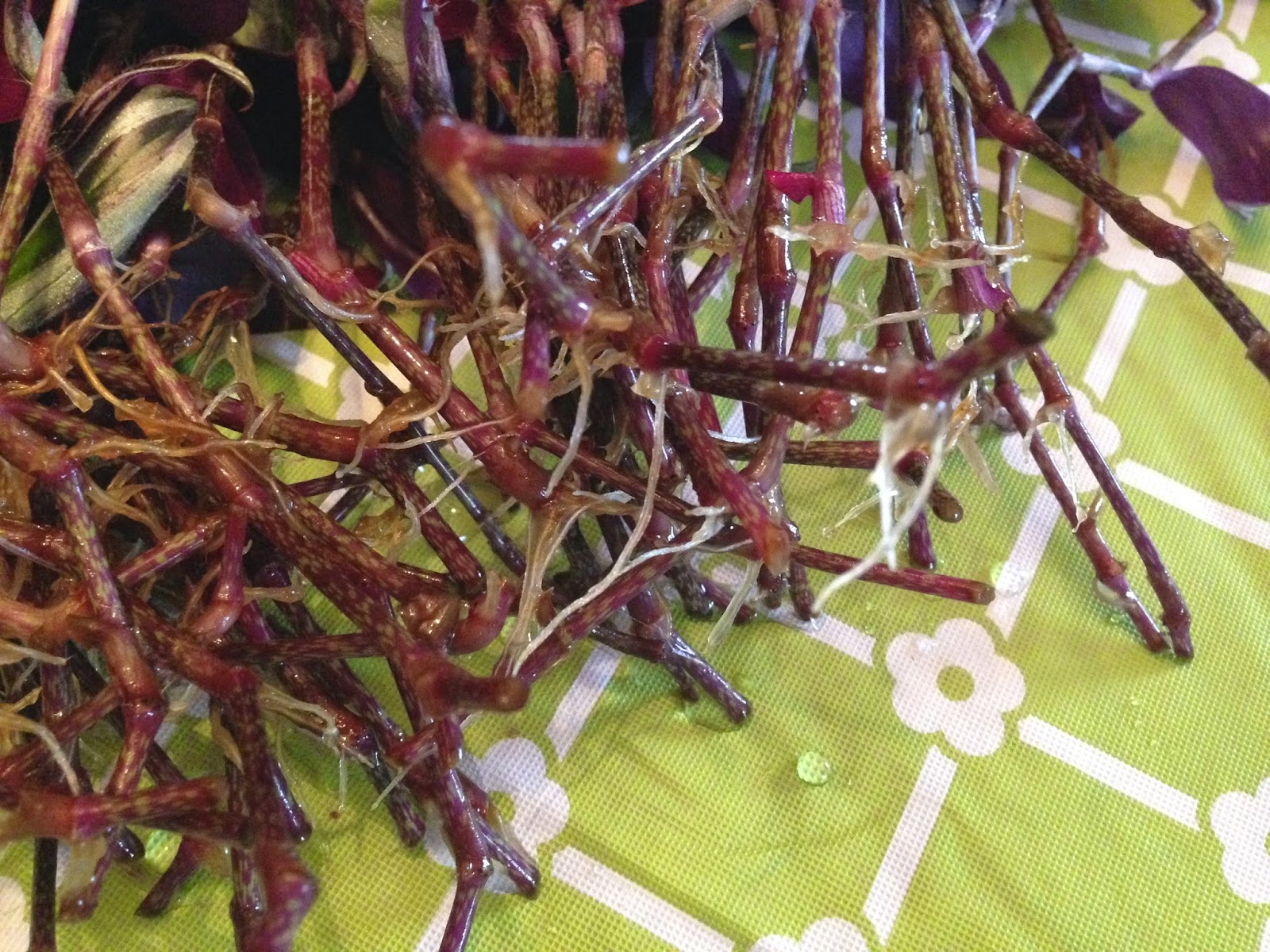I bought these plants probably because they were on sale and definitely because I needed something to fill a new little red container I had just acquired. Also, I was at a point in my life when I needed something new and fun. I had never heard of them before or seen them, to my recollection. I potted them with generic potting soil along with this polka dot plant I got at the same time, September 2013.
While the polka dot plant took off, these two aluminums didn't do so hot. After I repotted the polka dot plant in its own habitat, since it had gotten too large for this container, I moved the aluminums each to their own pots.
Shortly after this repotting in late fall early winter, I lost one - the leaves turned brown, shriveled and fell off until all I was left with was a stump. The second lost some leaves in the same way, but I've managed to keep it alive.
April 2014 (you can see some browned tips on all the leaves, I can't figure out what this is from yet):
Here are some stats I found on this rascal.
1.) Propagate: cuttings set in water until roots form.
2.) Water: keep moist during the growing season, let dry out during the winter months.
3.) Light: bright indirect light
4.) Fertilize: standard balanced fertilizer, every 2 weeks in the growing months
5.) Soil: sandy soil mixture
















































